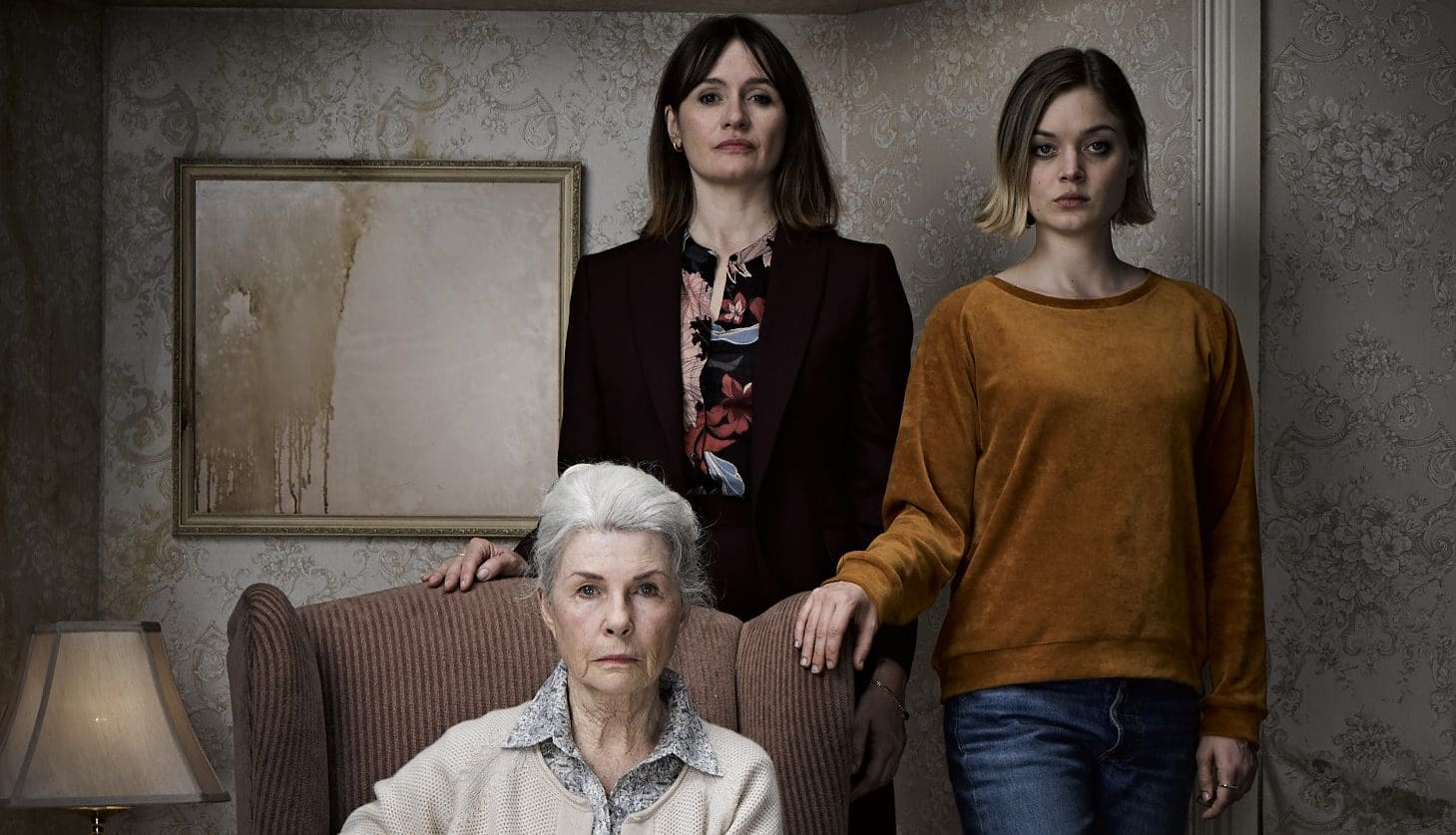
There are a lot of similarities between director Natalie Erika James’s Relic and Ari Aster’s 2018 film, Hereditary. Just as that was Aster’s début feature, so too is this James’s. Both films are slow-burn nightmares filled with shadowy cinematography, the feeling that something supernatural lurks just out of sight and complex family dynamics. While Relic admittedly doesn’t have anything as shocking as the sudden and heinous death of a major character in its first act as Hereditary does, it manages to pull off the one thing that film couldn’t: deliver a satisfying ending.
James and co-writer Christian White’s story begins when Kay (Emily Mortimer) and her daughter Sam (Bella Heathcote) return to Kay’s childhood home after her mother Edna’s (Robyn Nevin) mysterious disappearance. Though Sam is disturbed by the stories neighbors tell of Edna’s erratic behavior and the ominous notes she and Kay find throughout the house, her mother dismisses them as products of Edna’s deteriorating mental state. However, when Edna returns, the house becomes even more malevolent and the longer they stay, the clearer it becomes that they’re in danger.
In large part, what makes Relic’s sense of danger so potent is the quality of the filmmaking itself. There’s Steven Jones-Evans’s production design, which starts as a realistic and disquieting version of a haunted house in decay and–in the last act–a nightmare fun house meant to drive us and the characters mad. There’s Robert Mackenzie’s sound design and Brian Reitzell’s music, both filled with low rumblings and strange, abrasive sounds that keep the audience on edge and aware that the house itself seems alive. Perhaps best of all, though, is Charlie Sarroff’s cinematography, which is so filled with shadows and so deliberately framed that the viewer is always tense with the expectation something horrible is waiting to attack just outside the frame.
While the shots of characters standing in darkened hallways with unseen shapes lurking behind them are chilling, it’s actually a scene that plays on our most primal fears that’s most effective. As Kay puts her mother to bed one night, Edna claims that something is under her bed. Kay, of course, doesn’t believe her, but indulges her anyway. In most contemporary horror movies, we’d expect something to jump out at Kay the second she lifts the bed skirt, instead, James and Sarroff make us wait. The longer Kay stares at the formless shadows under the bed, the more our fear builds and when something finally seems to move, it’s a genuine relief when Edna suddenly breaks Kay’s gaze from that horrible, unknown thing.
However, as strong as the filmmaking is in that moment, it’s only so effective because of how strong the performances are. The audience doesn’t know if Edna distracted Kay from that monster under the bed to save her or if her actions were an accident and Nevin brilliantly walks that line throughout. On some level, the audience suspects something is off about Edna from the strange, rot-like wound on her chest or her unexplained disappearance, but her behavior is also perfectly in line with severe dementia and it’s always hard to tell what’s causing her behavior. A haunting and dementia are equally possible in explaining why in one scene Edna is tender and excited about the prospect of Sam moving into the house to help her and a few minutes later, openly violent when she thinks Sam has stolen the ring Edna gave her earlier.
Leaving the audience and the characters so unsure for much of the film’s runtime is precisely what makes Relic so unnerving and, more importantly, what makes the film’s central metaphor about inherited family mental illness so effective. Mortimer plays Kay’s dueling resentment and love of her mother with equal power and the guilt and fear driving Kay’s every action makes it believable for her to both dismiss her mother’s odd behavior and unconsciously understand that there is something evil lurking in the house. So, it should be a relief that the film finally confirms those suspicions in its harrowing final act, but Heathcote makes Sam’s abject terror in those scenes so real that the tension becomes almost unbearable. It’s truly a shame that viewers will have to experience those scenes alone in their homes rather than get to scream along with an audience. That said, it may also be to the film’s benefit that viewers aren’t pushed by a jaded audience used to certain horror story structures to scoff at the abrupt and somewhat hard-to-believe choices the characters make in the film’s final moments.
Viewed solely as a horror movie, Relic‘s end beats can make it feel like a disappointment on the same level as Aster’s Hereditary: a glorious build in tension done in by an overly symbolic and silly ending. But what James gains by deflating the film’s terror in those final scenes is to make its central metaphor about the characters’ primal terrors even more potent. The film is about any child’s fear of becoming their parents—including inheriting their madness or trauma. Those final scenes require a big leap in suspension of disbelief, but if an audience is willing to go with it, Relic is elevated to something brilliant in those final moments. It won’t work for everyone, but even if that ending feels a let-down, it doesn’t make the film any easier to shake.

